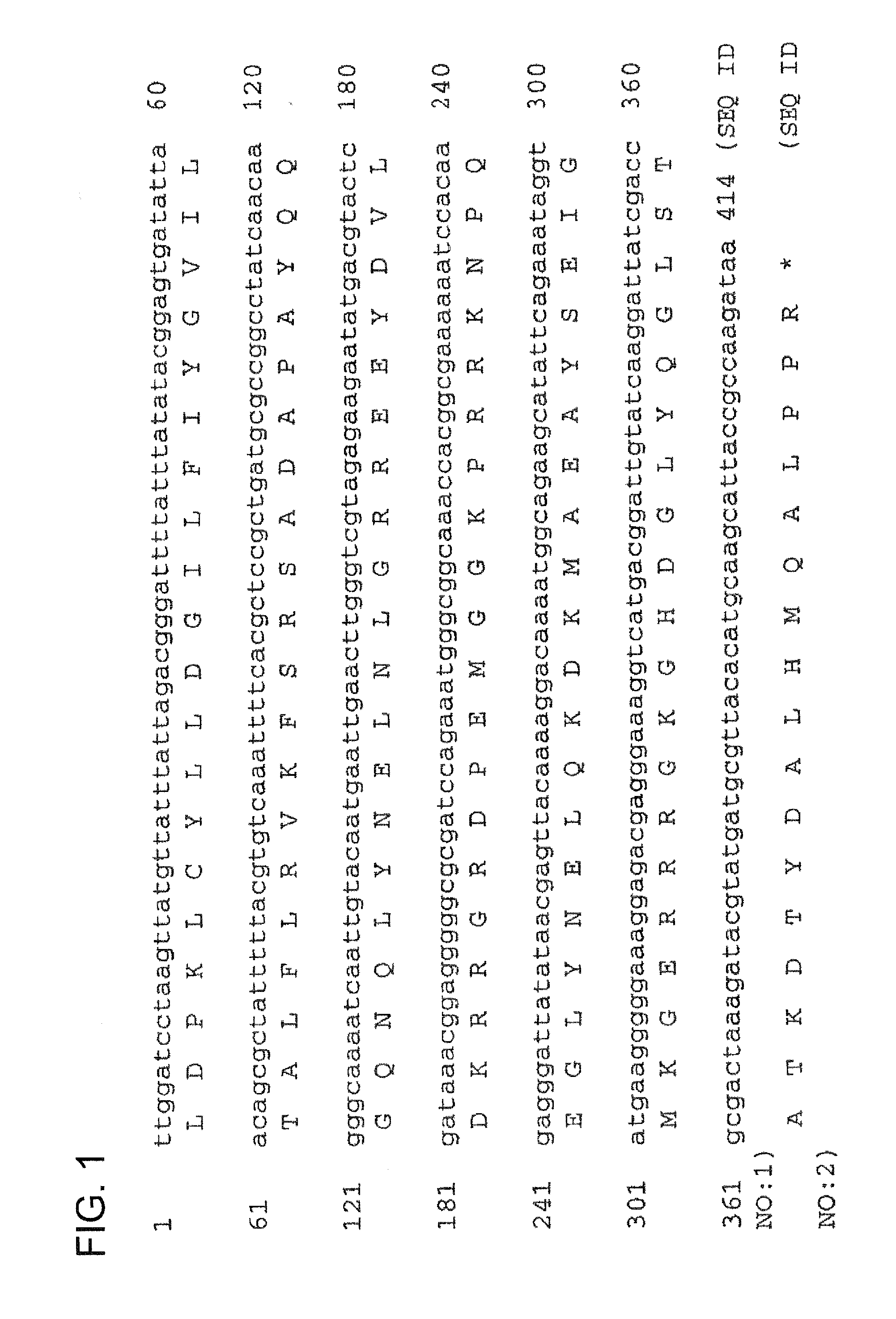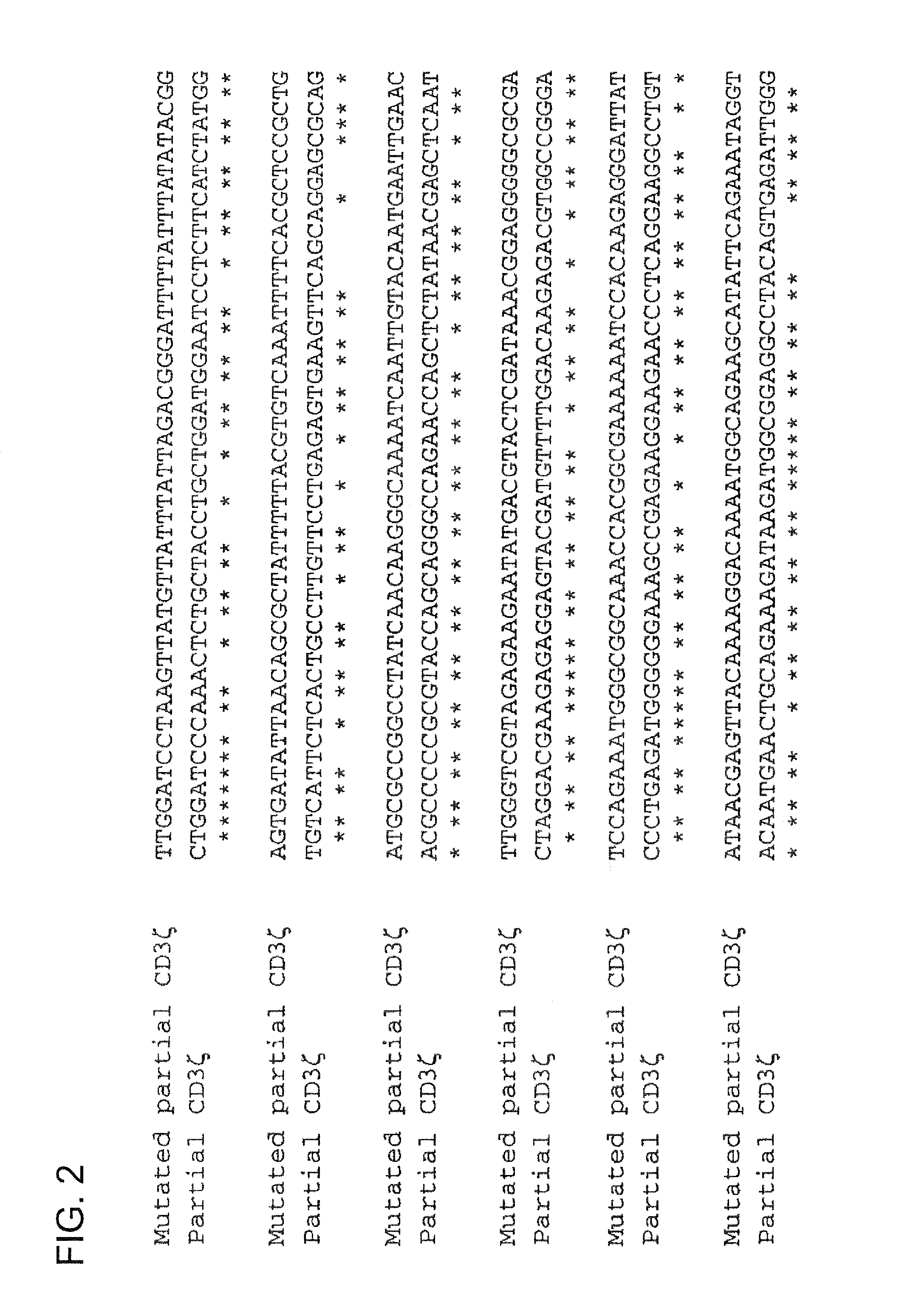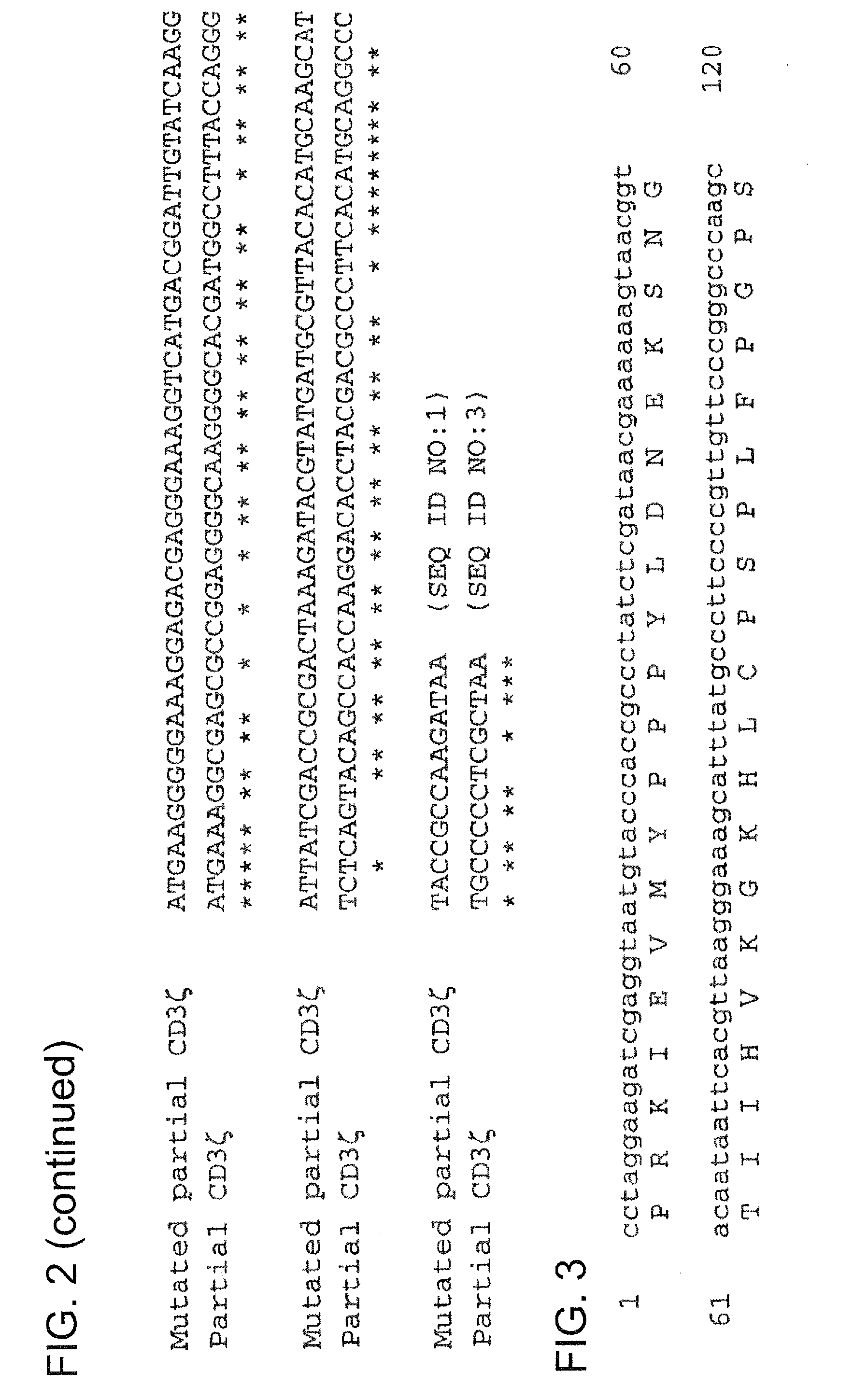Viral Vectors Encoding Multiple Highly Homologus Non-Viral Polypeptides And The Use Of Same
a polypeptide, highly homologous technology, applied in the direction of viruses, vectors, fusion polypeptides, etc., can solve the problems of homologous recombination events, adversely affecting the construction and production of vectors, and recombination can affect the effects of genetic manipulation, reducing the homology of the vector, and lowering the homology
- Summary
- Abstract
- Description
- Claims
- Application Information
AI Technical Summary
Benefits of technology
Problems solved by technology
Method used
Image
Examples
example 1
[0251]Use of the present invention to develop “designer T cells” initially involved the use of two nine-mer immunodominant CTL epitopes derived from JCV VP1 proteins (termed p36 and p100) in HLA-A0201+ subjects to expand JCV-specific T cells from an HLA-A0201+ PML survivor. Following this expansion of JCV-specific T cells, cell sorting was performed to identify and isolate p36 or p100 / HLA-A0201 tetramer-positive cells. Two cell populations, one specific to p36 and another specific to p100, were subjected to TCR cloning. Two distinct dominant alpha (α) chains (Va6 and Va12) and a unique beta (β) chain (Vb5.1) were cloned from the p36-specific cell line, while only one alpha (Va8.6) and one beta (Vb2) chain were dominant in the p100-specific line. DNA constructs encoding chimeric immune receptors (CIRs) were created comprising the extracellular domains of TCR alpha and beta chains fused to the transmembrane and cytoplasmic portions of CD3zeta (these CIRs were designated VaCaCD3z or Vb...
example 2
[0253]It was demonstrated that CIR-T cells can mediate antiviral activity against HIV-1 in cells that are resistant to class I-restricted CTL-mediated activity. Furthermore, CIR-T cells can suppress virus in multiple cell types, including monocytes, dendritic cells, and lymphocyte-dendritic cell clusters. These results showed that T cells can be redirected against novel targets, and that independence from the class I pathway can have distinct advantages. (See Ma et al, 2002, for review.)
example 3
[0254]Construction of vectors containing CIR nucleic acid sequences involved the mutation of a number of genes, with such mutations performed in order to exploit the degeneracy of the genetic code, thereby reducing homologous recombination in vectors that contain two or more CIR molecules encoding for highly homologous polypeptide sequences (e.g., highly homologous proteins and / or polypeptide domains within CIR polypeptide sequences). Genes that were altered at the nucleotide level include: CD3ζ (refer to the exemplary mutated CD3ζ nucleic acid sequence shown in FIG. 1, which comprises a partial extracellular domain-TMD-intracellular domain sequence of mutated CD3ζ); CD28 (refer to the exemplary mutated CD28CD3ζ nucleic acid sequence shown in FIG. 3, which comprises a partial extracellular domain-TMD-intracellular domain sequence of mutated CD28 and an intracellular (cytoplasmic) domain of mutated CD3ζ); and FcεRIγ (refer to the exemplary mutated hFcεRIγ nucleic acid sequence shown ...
PUM
| Property | Measurement | Unit |
|---|---|---|
| Fraction | aaaaa | aaaaa |
| Fraction | aaaaa | aaaaa |
| Fraction | aaaaa | aaaaa |
Abstract
Description
Claims
Application Information
 Login to View More
Login to View More - R&D
- Intellectual Property
- Life Sciences
- Materials
- Tech Scout
- Unparalleled Data Quality
- Higher Quality Content
- 60% Fewer Hallucinations
Browse by: Latest US Patents, China's latest patents, Technical Efficacy Thesaurus, Application Domain, Technology Topic, Popular Technical Reports.
© 2025 PatSnap. All rights reserved.Legal|Privacy policy|Modern Slavery Act Transparency Statement|Sitemap|About US| Contact US: help@patsnap.com



